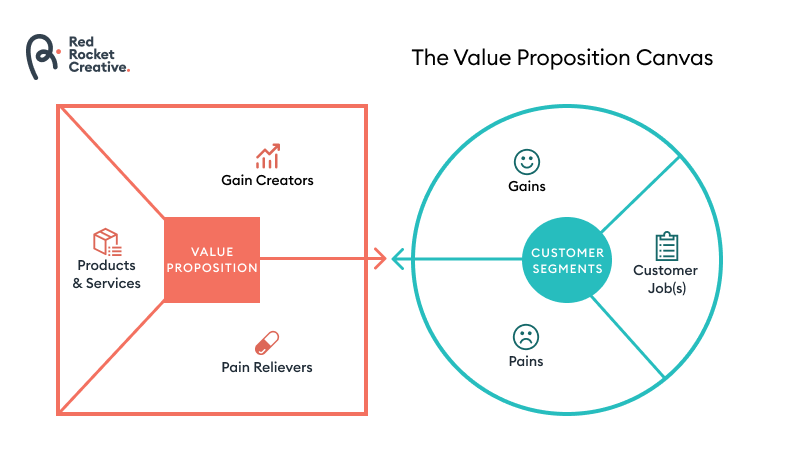Sales teams complain that the marketing team delivers unqualified leads.
Marketing teams complain that sales teams don’t respond to leads generated by their efforts… Does this age-old argument sound familiar?
Marketing and sales team integration is all of the rage right now. It’s the basis of so many important marketing and sales trends. Most prominently is the shift to Revenue Operations, whereby we’re seeing a strategic integration of sales, marketing and service departments to provide a better end-to-end view to administration and management, while leaving day-to-day processes within the departments.
While there are many upsides to this alignment, there are just as many obstacles facing these teams as they try to get on the same page. Read on as we break down the top five challenges facing marketing and sales teams as they attempt to align teams, so you can take a proactive approach towards building your sales and marketing teams and systems.

1. Marketing-to-Sales Handoff
The marketing-to-sales handoff seems simple enough: when a lead becomes qualified for sales (a sales-qualified lead, or an SQL), it’s the job of the marketing team to ensure that their sales colleagues know about it.
You ask, “What could go wrong?”
The answer is…a lot.
To generalize, there are two areas where this handoff can go awry.
The first is the qualifying criteria around when the right time is to hand the lead off to sales. Think about it: what are your marketing-qualified lead (MQL) and SQL criteria? What are you using to ensure that these criteria are met for handoffs day-to-day? How nuanced are the qualifications?
If your sales and marketing team may have different answers to these questions, the result can be handoff challenges.
The second problem area involves the mechanism for your handoffs. Are your marketing leads rotated automatically once qualified, or do they already have an owner before they ever get to that stage? Do you assign your sales rep a task, push a notification, send them an email, notify them in Slack, or some combination of these options?
Automated marketing tools are great at facilitating this process, but only work when they are properly set up. That means having real conversations on both sides of the fence. The marketing-to-sales handoff must be thought through and agreed upon by both teams to be successful – a task made much more difficult if your teams are not operating in the same systems - or have access to the same data.

The Solution for Your Marketing-to-Sales Handoff
Define Handoff Guidelines.
To improve your marketing to sales handoffs, consider having a meeting with team leads and define the steps you should take to qualify a lead.
Ask your teams what role the deal stage, lead score, buying committee makeup, and ICP tier play in the timing and manner of the handoff? To address a less-than-perfect handoff from marketing to sales, have a meeting between your marketing operations and sales operations teams to agree on the complete parameters of your lifecycle stages.
Next, pull some reports to see at what lifecycle stage sales became involved in winning opportunities to objectively determine what has been most successful to date. Finally, once everyone agrees on the terms of your lifecycle stages and when and how sales should be tapped to jump in, update your CRM, marketing automation platform, and other technology to accommodate these newly agreed-upon handoff guidelines.
2. Disparate Systems
There are literally hundreds of tools that your sales and marketing teams could use to run their individual motions.
What’s the result? A mis-aligned tech stack. For marketing and sales activities – especially those that require a handoff – data accuracy is everything. And the more tools you have, the lower the chances are that your data is reliable. Let’s streamline the situation because:
Too many systems can lead to:
- Too much context switching and the necessary info not being added to the correct tool
- System syncing issues and resulting data gaps
- No single source of truth for decision making about the success or failure of your efforts
- Misaligned handoff and scoring criteria
The Solution for Disparate Systems
Disparate systems can be one of the harder problems to solve because organizations may have multiple internal stakeholders and decision makers involved. Nevertheless, there are a few ways to address this issue.
First, you can look at moving all of your marketing and sales operations into a single tool (like HubSpot or Salesforce) that can accommodate all of the needs for marketing and sales alignment and provide a seamless experience for your customers.
If combining systems is not an option, consider doing an audit of where information is not being collected, synced, and updated between systems. This can impact things like lead scoring and lifecycle stage updates, which are crucial to keeping sales and marketing aligned. Reporting can also be impacted and lead to decisions made on incomplete information. Our experience has been that sales organizations like Salesforce, but Salesforce’s marketing automation platform called Pardot -misses the mark when compared to Hubspot. Hubspot’s marketing platform is easier to use and plays nicely with Salesforce.
Can your systems trigger actions in one another to ensure that both sales and marketing stay on the same page? If not, check outside of your tools’ native functionality using platforms like Zapier or Workato.
3. Inconsistent Data
When you have too many tools, weak processes for using your tech, a lack of operational leadership or any combination of these things, your data suffers. When you can’t trust your data, you are flying blind when it comes to making decisions that impact your customers.
Bad data doesn’t just lead to bad calls because you can’t properly forecast your sales team’s pipeline. Bad data means that we don’t personalize campaigns, we get the handoff wrong, we put people into the wrong segmented cohorts, and that we over or under-touch our prospect accounts.
The truth is, data drives your revenue engine. Everyone in your revenue operations – marketing leaders and implementers, sales managers and reps, and customer success teams – needs data to drive decisions around how they interact with customers.
The Solution to Inconsistent Data
Often, solving the issue of disparate systems will also solve your data problems. But in instances where that’s not the case, other solutions are in order.
If you are not getting the data you need for sales and marketing to align and make insightful, helpful decisions, your data collection processes might be in the way.
The first thing you will want to do when you’re thinking about your process is to interview your team to see what obstacles are preventing them from adding data. Do you have the most commonly populated properties in the left-side views of the correct records, broken down into sections? If not, then note this down as something you can improve.
Next, take a look at how you can use automation to tighten up your processes and keep your data clean in the process. For example, can you use automation to create records or move them from stage to stage of a pipeline to ensure that the data surrounding those activities stays accurate? Can you duplicate or update properties using workflows to reduce manual entry?
Finally, make sure that all of your systems are sharing data regularly and automatically. This will ensure that everyone and every automation has the right data at the right time. And of course, condensing your tech stack will help you to keep data consistent.

4. Misaligned Goals and the Battle Over Marketing Qualified Leads
All marketers are familiar with this play: gate content to capture an MQL (Marketing Qualified Lead) to then send the information to a sales/business development rep. That SDR/BDR (Sales/Business Development Representative) then prospects in concert with marketing to move this person into the coveted Sales Qualified lifecycle stage.
Once the lead becomes qualified, the Account Executive takes over and closes the deal, won or lost.
This play seems fair enough on its face. It has been used thousands of times by thousands of marketers. But if we’re talking about alignment, this play relies on a process laden with potential land mines.
Think about it: if the marketing team has a goal to drive qualified marketing leads and they are assessed based on their ability to meet that goal, their sole focus will be on how to get as many gated content downloads as possible.
What’s the issue with that? Well, it turns out that the audience most likely to read your content is not necessarily the audience that wants to buy your product now.
If sales is judged by the number of Marketing Qualified Leads they convert to opportunities, company friction is baked into the system: the marketing team meeting their goals is out of alignment with sales reaching their goals.
Teams focusing on generating Marketing Qualified Leads rather than revenue and demand will continue to struggle with alignment and will leave themselves ill-prepared to run Account Based Marketing campaigns or to provide a seamless experience for their customers.
Solving Your Team’s Misaligned Goals Through Effective Communication
Reach out to your sales counterparts and have a conversation about how you can set up processes, regular stand ups, and other means of listening to and learning from each other.
Sales can teach marketing a lot. For instance, what happens on calls with Marketing Qualified Leads. What objections does the sales team run into over and over? Which content assets do people make mention of in calls?
On the other hand, sales can learn from their colleagues on the marketing side of the house. What content is marketing serving and why? How have they altered the targeting, and how is sales seeing it play out in sales calls? What content is consumed most in deals that result in “closed-won” outcomes?
Once sales and marketing have more understanding of one another, they can make informed choices that help both teams win. Once there is mutual understanding, the teams can begin to have conversations about important choices that can greatly impact the businesses pipeline:
- Should we focus on capturing marketing leads or should we un-gate content to drive demand and growth opportunity?
- Should we define a Marketing Qualified Lead differently than we currently do?
- How can we support asynchronous buying and get prospects to Sales Qualified Lead or sales-qualified opportunity (SQO) status before getting the sales team involved?
It is important to maintain efficient communication instead of risking the chance of losing leads during the handoff process from marketing to sales.
5. Running Successful Account Based Marketing
The final alignment challenge in this series is the challenge of running successful Account Based Marketing plays with misaligned teams. Running Account Based Marketing is all about being on the same page, and concentrating resources on a specific set of targets within a market. At the end of the day, you just can’t do it without communication!
All of the problem areas outlined above – poor handoffs, disparate systems, inconsistent data, and arm wrestling over Marketing Qualified Leads – prevents an organization from running successful Account Based Marketing plays, especially at larger scale.
Why is it so hard to knock your Account Based Marketing goals out of the park when sales and marketing aren’t talking? It’s because Account Based Marketing requires that you’re not only aligned on one single lead stage– you have to define an entire buying committee. This means even more handoffs, system, data, and goal alignment.
The Solution to Account Based Marketing Alignment Issues
If you are a HubSpot user, you likely know that you have a plethora of HubSpot tools to use for your ABM (Account Based Marketing) plays:
- Target Account property
- ICP Tier property
- Account Overview
- Suggested Target Account AI tool
- Prospects tool to see accounts who have visited your website
- ABM and Target Account dashboards
- Company scoring
- Buying role properties
- Workflow automations
- Chat bot or live chat
- Automated lead rotation
- Ads conversion events
Here are some steps you can take to align your team for Account Based Marketing:
- Verify that you have been collecting job titles and buying roles. If you have not, go back through your last quarter of closed deals and manually enter this information or update via workflows. For example, you can make sure to indicate that a certain job title is always a decision maker.
- Create a dashboard to understand the buying roles that have been involved in your recent deals and who usually shows up to the buying table first.
- Have a meeting between sales and marketing to review this information and agree upon the buying committee and who to prioritize.
- Follow the other solutions outlined above to ensure that your teams are aligned on goals, lifecycle stage definitions, handoff protocol, and that your data is clean and your systems are talking.
- Finally, use your Target Account and Account Based Marketing tools to set up a campaign to support the alignment built between sales and marketing.
Conclusion
Who says that sales and marketing can’t play well together? More often than not, alignment is within reach and just takes a little bit of learning and listening, followed by consistent action, to achieve. Remember- communication is key and execution is essential to ensure your marketing and sales efforts are generating the highest possible results.
Sangeet Anand
Director of Digital Marketing Sangeet draws on her business background, creativity and technical know-how to deliver innovative marketing solutions for a variety of our clients.






